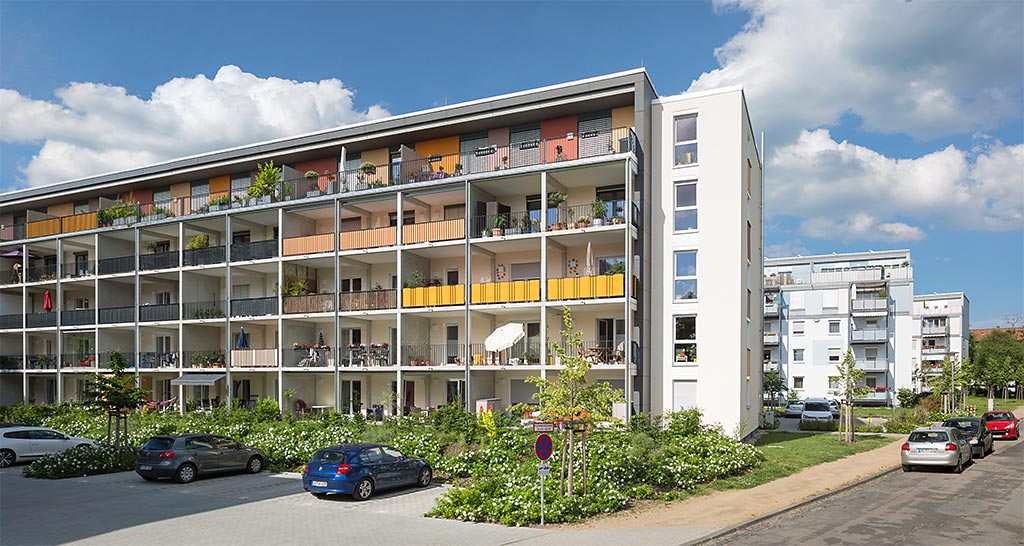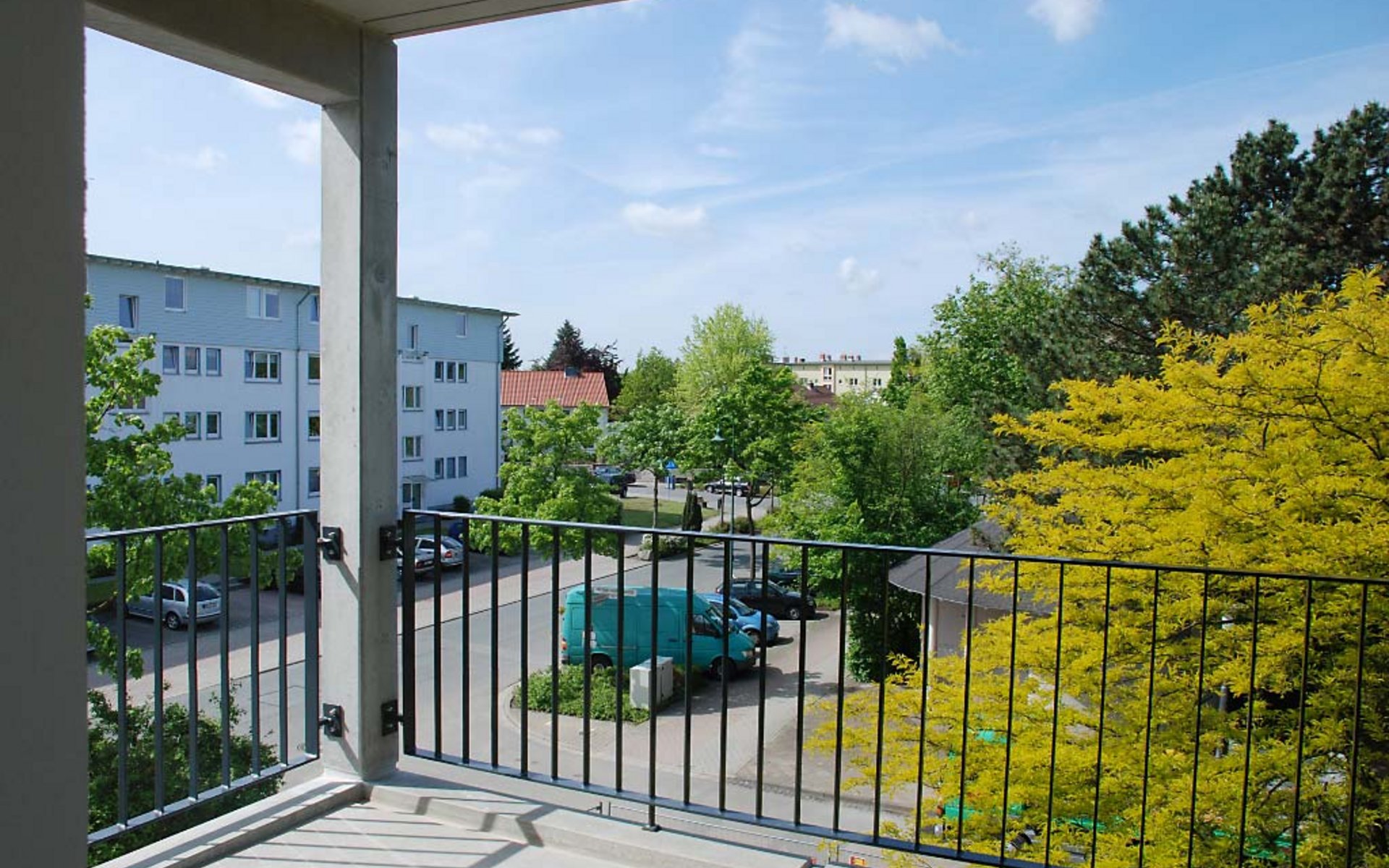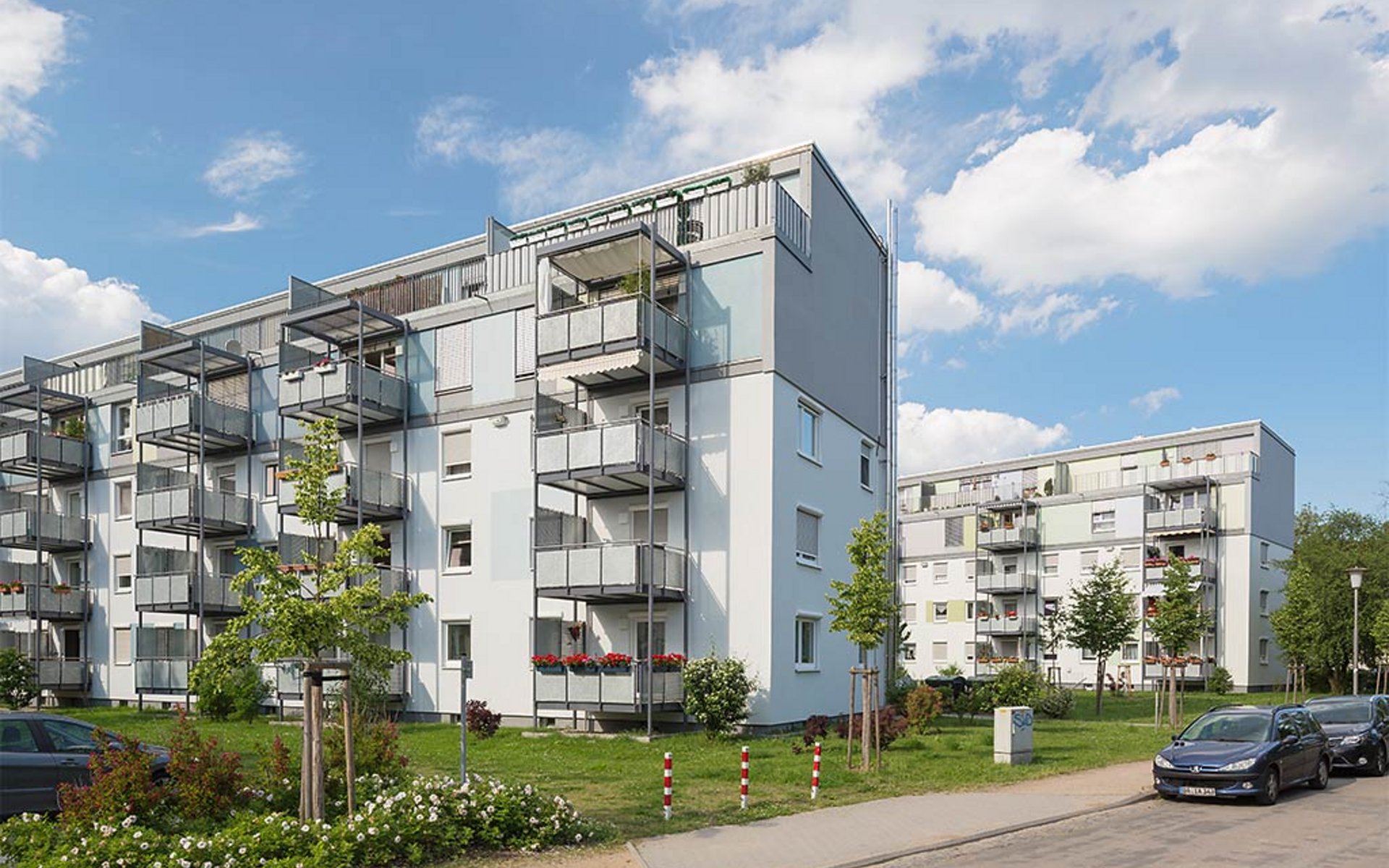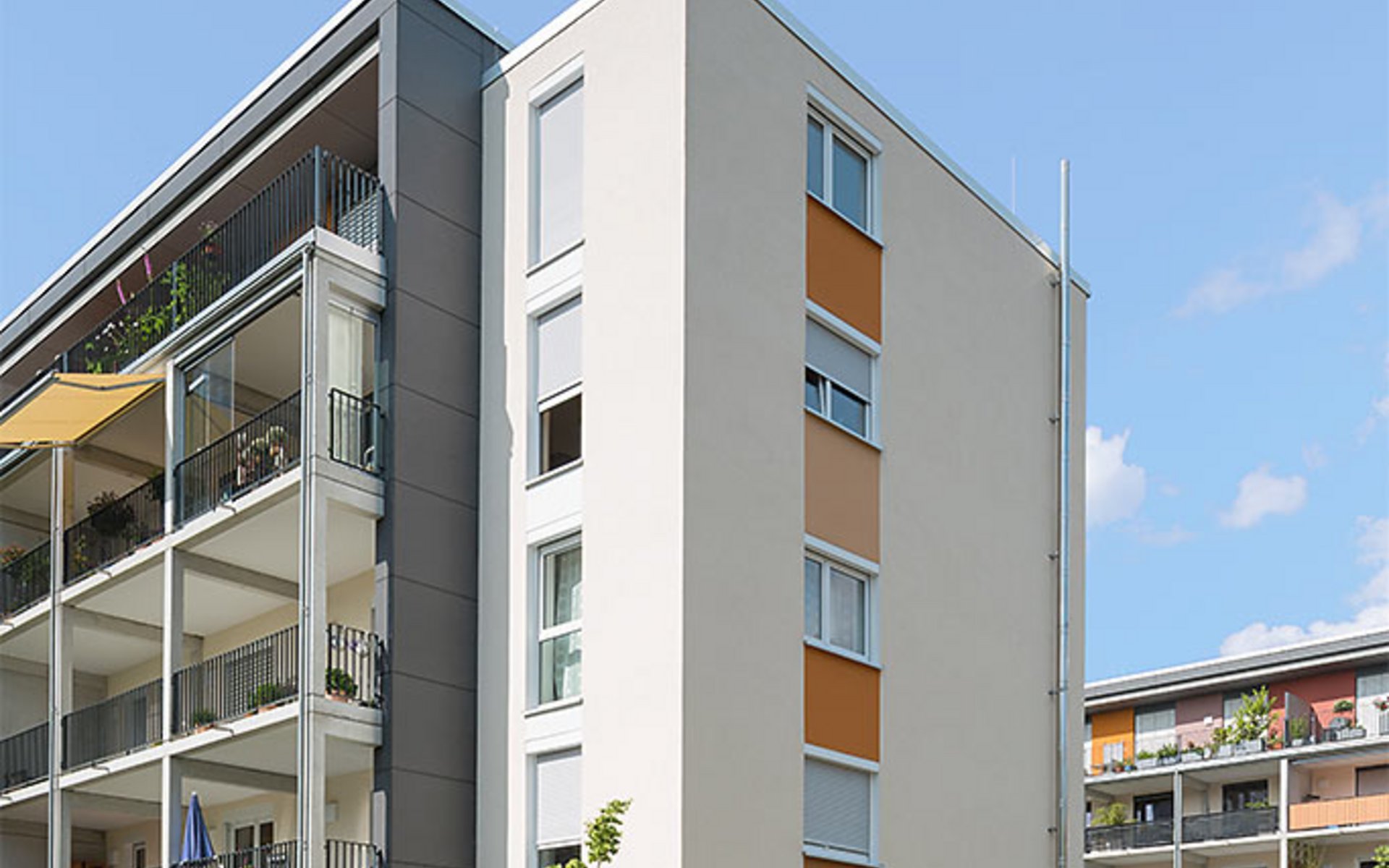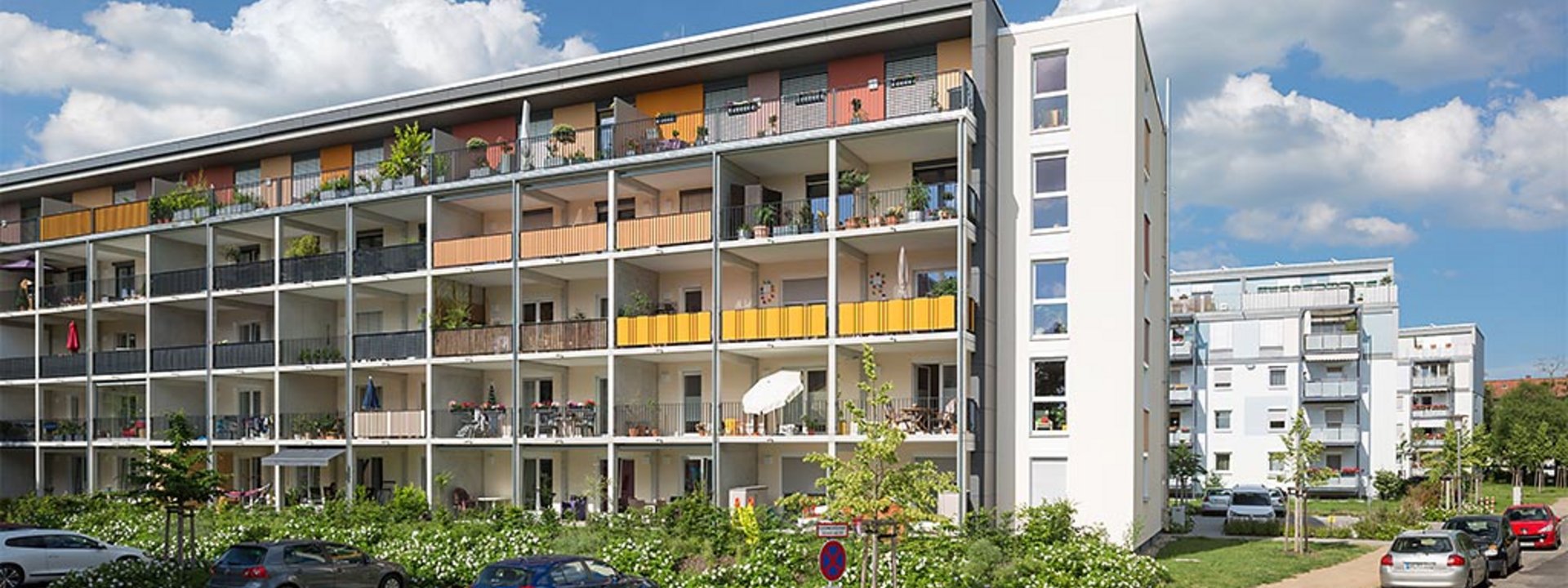
"Postsiedlung" | Moltke-, Oppenheimer- and Binger Straße
Both in 1950, when bauverein AG acquired the site of today's "Postsiedlung" to build flats for the employees of the Telecommunications and Postal Engineering Central Office, and 54 years later, Darmstadt had one and the same problem: there was a housing shortage. In order to create the living space so urgently needed in the new millennium, a neighbourhood redevelopment was essential.
As the estate mainly consisted of two and three-storey 1950s buildings with poor insulation, floor plans typical of the time and serious structural defects, it was initially assumed that the majority of the houses would have to be demolished. In 2007, this concept was abandoned: an inspection of the building fabric in the course of the successful extension of Binger Strasse 1-9 revealed that serious defects in some of the buildings could be rectified through extensive refurbishment. On the other hand, it was concluded that some of the buildings were suitable for an extension.
By 2020, when the neighbourhood redevelopment has been completed and the careful densification has taken place, 330 should have become around 480 flats, including at least 81 social housing units. The increase in living space is even 81 %. In order to future-proof the neighbourhood, the new concept is also based on a balanced ratio of privately financed housing (50%), subsidised housing (30%) and owner-occupied flats (20%). The residents of the "Postsiedlung" will benefit twice over from the scheme: they will enjoy greater living comfort and a significant reduction in ancillary costs. Ultimately, at the end of the neighbourhood conversion, a 78% reduction in primary energy requirements and a 77% reduction in CO2 emissions should be achieved.
Photos: © Frank Seifert, www.frank-seifert.com; © bauverein AG, www.bauvereinag.de
year of construction
Modernisation period from 2008 until 2020



